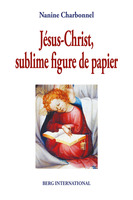The work of checking every scriptural reference has impressed upon me just how totally the gospels are very likely pastiches of Jewish scriptures and some non-canonical writings. There appears to be nothing left over requiring explanation as if from any other source. Jesus walking on water was not an exaggerated retelling of a biographical event where Jesus happened to be walking on a sandbank (as some have said); nor were the healing miracles exaggerations of some real-life psychological power Jesus had over those with ailments. . . . they, everything, was written as a renewal of a sacred saying or scripture. Nor is there anything new about the teaching of Jesus: everything he is narrated as having taught is a re-writing of Scriptural or proverbial teachings of the time of the evangelists. …
There is no historical person of Jesus behind the narrative. If there had been then there would be some indication of a real person that the narrative had to adapt somehow to scriptures. What we find instead, however, is a figure entirely, entirely, made up of scriptures. Scriptural rewriting is the warp and woof of what he does, what happens to him, and what he says and teaches. …
